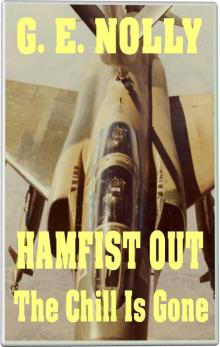 Radiant Crossing
Radiant Crossing Radiant Crossing: Trouble On Black Friday (The Adventures of Hamilton Hamfist Hancock Book 5)
Radiant Crossing: Trouble On Black Friday (The Adventures of Hamilton Hamfist Hancock Book 5) Hamfist Out: The Chill Is Gone (The Air Combat Adventures of Hamilton Hamfist Hancock Book 4)
Hamfist Out: The Chill Is Gone (The Air Combat Adventures of Hamilton Hamfist Hancock Book 4) Frag Order: Enemy Inside The Gate
Frag Order: Enemy Inside The Gate Hamfist Over Hanoi: Wolfpack on the Prowl (The Air Combat Adventures of Hamilton Hamfist Hancock Book 4)
Hamfist Over Hanoi: Wolfpack on the Prowl (The Air Combat Adventures of Hamilton Hamfist Hancock Book 4)